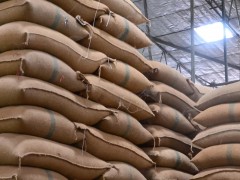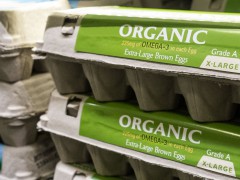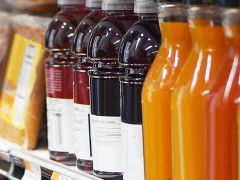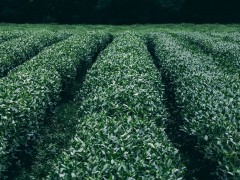Though temperatures may be cooling, a lack of rain has allowed the nation’s worst drought in decades to worsen this week. The U.S. Drought Monitor showed that as of Tuesday, just over two-thirds of Iowa, the nation’s biggest corn producer, was in extreme or exceptional drought — the Monitor’s worst two classifications. News agencies report that nearly all of Nebraska, Kansas, Missouri and Illinois are in the same categories.
Plains farmers have begun harvesting scant amounts of surviving corn, though some growers cut their fields weeks ago in acknowledgement of their losses. Many ranchers were forced to sell livestock after having no grass for grazing or money to buy feed, the cost of which has also soared due to the drought.
Initially forecasting the nation’s biggest harvest since 1937 in the spring, the USDA now estimates the summer will bring the lowest corn and soybean production levels since 2006.
Throughout this drought, however, organic farmers struggle the worst in the face of unfair insurance policies and disaster-relief programs.
Because the USDA perceives less chemically-dependent organic farming as a higher risk method than conventional farming, organic farmers are charged higher insurance premiums (about 5%) than conventional farmers. Theoretically, this premium is offset by the higher profit margins an organic farmer should receive compared to his conventional counterpart; currently, a bushel of organic corn goes for $15.89, while conventional corn goes for about $8.50.
However, in the face of a drought or other natural disasters, crop-insurance policies for organic crops do not compensate organic farmers at the same rate as “conventional” farmers. Scott Marlow, Director of the Farm Sustainability Program for Rural Advancement Foundation International – USA illustrates this disparate treatment:
“For an organic farmer who receives a price for organic product that is double the conventional price, 75% crop insurance coverage based on the conventional price actually covers 37% of the farmer’s income. Organic farmers in essence pay more for less coverage.”
In 1995, the Crop Loss Disaster Assistance Program (CLDAP) established separate payment rate and yields for different “end uses” of the same crop, with rates meant to reflect differences in price that the produce would have commanded on the open market had there been no disaster. However, a series of legal battles have since confirmed that there is no duty on the Secretary of the USDA to establish distinct rates for organic crops.
Organic producers should have access to insurance programs that meet their needs without putting them at a competitive disadvantage to conventional producers. It is time we either abolish the 5% insurance premium or begin to provide organic farmers with disaster assistance that will accurately reflect organic market prices.
— By Gabriella Agostinelli

















